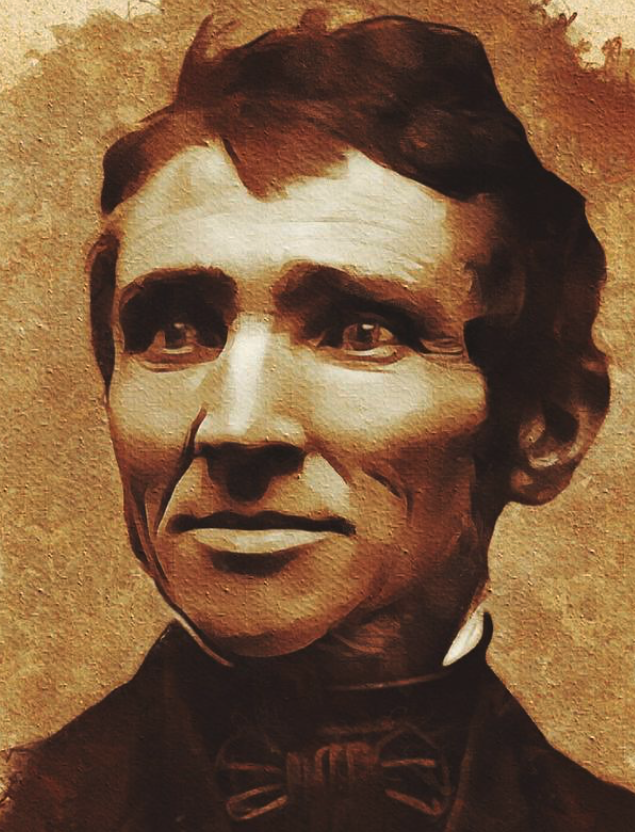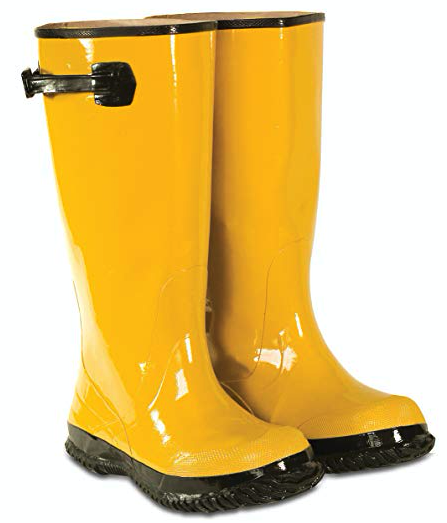Goodyear Tires is one of the largest producers of rubber tires in the world. The company’s namesake, Charles Goodyear, was an American inventor who created the chemical process to manufacture vulcanized rubber. The rubber that Goodyear created was more elastic and stronger than regular rubber. It was also able to withstand extreme weather conditions such as cold and heat. These properties made it appropriate for many uses, especially within the automotive industry.
Charles Goodyear was one of many important inventors from the United States. We remember him as a chemist whose achievement is still relevant today. Charles Goodyear and his obsession with rubber would change and improve the way the world moved.
His life was not always easy, and his path to success was not as straightforward as it would seem. He overcame many challenges with his will and his obsession to create the perfect rubber material.
Charles Goodyear
Charles Goodyear was always fascinated by chemistry, but it was not until 1833 that he became obsessed with rubber. Let’s find out how and why he became so intrigued by this new and crucial material.

Early Life
Charles Goodyear was born on December 29, 1800, in New Haven, Connecticut. His father was of British descent, and his earlier ancestor was one of the founders of the New Haven colony. Charles was the first-born child, the oldest of six children of the family. His father was a dealer of hardware and also an aspiring inventor. He was probably his source of inspiration to become an inventor. His family was not well-off; in fact, they were struggling to make enough money to survive.
Goodyear attended public schools where he would learn the necessary skills like writing and reading. As the eldest son, Charles was chosen by his dad to help him with his business. At the age of 23, Charles moved to Philadelphia to learn more about tools and hardware. His stay there was not extended, as his health soon deteriorated. Nevertheless, he worked very hard during this time. His time in Philadelphia ended quickly, and he returned to New Haven in 1825.
Business Partner and Marriage
While in Philadelphia, Charles met a young lady named Clarissa Beecher, whom he married in 1824. They had five children altogether; four of them were daughters. Charles named his only son after himself.
Upon returning to New Haven, Charles became a partner in his father’s company. They dealt with buying and selling hardware, agricultural products, ivory, and metal buttons. For some time, this partnership seemed to work, and they were making enough money to support their families. They imported supplies from England, which the company managed to sell for handsome profits.
Unfortunately, this success would not last for long. The business had some business ventures that failed. These mistakes created a poor reputation for the firm. As the financial crisis loomed, the downfall of the company soon followed. Goodyear’s health started to decline in 1829. Eventually, the Goodyears had to close the business and seek opportunities elsewhere.
Goodyear Becomes Obsessed with Rubber
Unsuccessful business ventures forced Goodyear to seek other opportunities. Shortly after the partnership broke down, Charles traveled to New York to find new inspirations for his latest adventure. Goodyear was possibly already aware that the rubber industry was booming, which meant the was a lot of money to be made. His trip to New York could have inspired him to get into the rubber business. He saw a shop that sold rubber products and saw first-hand how popular this material was becoming.
Charles visited the Roxbury Rubber Company, where he bought himself a life preserver made of rubber. He began to study it thoroughly after he returned home. Goodyear soon noticed that this life preserver was not very well-made and not effective at all. It was evident to him that the tubes inside the life preserver would fail.
He quickly saw the opportunity to improve the design and started doing just that. Charles made some tubes that were of higher quality than the ones on the life preserver. He took those back to New York and showed them to the manager of the Roxbury Rubber Company.
Goodyear was smart about this. He saw that the company was not making good enough products. The manager of the company admitted that to Goodyear and was impressed by the interest that Charles showed. It turned out that the company was not doing well because of the poor quality of the rubber itself and not because of the design of the tubes. The manager showed Goodyear the mountain of rejected lifesavers because of the poor rubber quality. The main issue was that it melted when it was hot, and it shrunk when it was cold.
It was partly curiosity, his ability to observe, and luck that brought Goodyear success. He wanted to return to New Haven and start working on ways to improve the rubber. Instead, problems awaited at home.
Imprisonment and Goodyear’s Fasciation With Indian Rubber
Goodyear’s old debts came back to haunt him. A creditor visited him and had Charles thrown in prison. His prison stay would turn out to be a positive, life-changing event for Goodyear. He used his time behind bars to study and think of new ways that rubber could be improved. Imprisonment was the defining period of Charles Goodyear’s life.
Goodyear was still impressed by his venture in New York and wanted to improve the Indian rubber. He had a chance to get his hands on the rubber while he was in prison. Goodyear had all the time in the world to experiment and look for ways to improve it. It was clear that this rubber was not resistant enough to heat and cold.
Charles mixed various chemicals with rubber to see if they work. It allowed him to learn a lot about chemistry and how certain chemicals reacted to rubber. His experiments also caused a lot of damage to the debtor’s prison, and they prevented him from experimenting further.
Edging Closer and Closer to The Solution
Charles Goodyear and his obsession with rubber were too strong to be stopped by those debtors. When the inventor served his sentence for his debts to collectors, Goodyear would move swiftly to make sure that he could do what he wanted to do so much. He moved his laboratory to an attic in New York, where he was able to work through the problems.
From 1834 to 1839, Goodyear continued to conduct experiments and try what worked best to make the rubber more resistant to heat and cold. His tests often failed, leaving him with a heap of melted rubber. These early experiments had severe consequences to his health, and no doubt contributed to his premature death in 1860.
For a short period in 1835, it looked like Goodyear succeeded in his quest to make rubber better. It looked like the solution was to apply magnesium to rubber and then boil it in quicklime and water. This formula seemed to make the rubber lose its stickiness and stop it from melting or getting deformed in adverse weather conditions. He even started selling some abroad, where he received considerable recognition for his work. However, this formula turned out to be unsuccessful when Goodyear tried to apply a weak acid to the rubber, which turned the rubber soft again.
In 1837, he almost made another breakthrough. He discovered that treating the rubber in nitric acid makes the rubber much smoother and less sticky. This process made it viable for making waterproof mailbags for the U.S. Post Office. This enthusiasm was short-lived. The solution turned out to be useless, as the bags melted at high temperatures. His discoveries proved unsuccessful, and he lost almost all his money from these failures and a national financial panic.
Goodyear’s Breakthrough – A Stroke of Luck
The setbacks from 1837 would not stop Goodyear. He remained determined to improve the rubber. His financial situation was not ideal, but Charles Goodyear kept on looking for a solution.
After 1837, Charles Goodyear was looking for new opportunities and business partners to help him finance his experiments. He moved all over the U.S. – he was active in New York, Philadelphia, Massachusets, and Connecticut. It was in Connecticut that Goodyear met Nathaniel Hayward. Hayward worked at a rubber factory and had plenty of experience in dealing with rubber. He revealed that to Goodyear that treating rubber with sulfur made it less sticky. However, this solution was not yet perfect, as the rubber was still not vulcanized, which would be the process for which Goodyear became famous.
Goodyear invented rubber vulcanization by accident. While at the Eagle India Rubber Company, he was working with the sulfur-treated rubber. Accidentally, he dropped some sulfur-treated rubber over a hot stove. The heat caused the sulfur-treated rubber to vulcanize. Finally, after years of trying and after many failed experiments, Goodyear discovered the solution to vulcanizing the rubber. It was that day that changed Charles’ life. It was a very good year for Goodyear!

Vulcanized rubber and the patent
Encouraged by this discovery, Goodyear set up a small factory where he would start producing vulcanized rubber and work on perfecting the whole process and patent. The invention was still not practical. The procedure only needed a few minor adjustments to make it viable for mass production. From the year of 1839 to 1844, Goodyear and colleagues worked on perfecting the recipe for vulcanized rubber.
He finally patented the process for vulcanized rubber in 1844. Goodyear was ultimately successful in his lifelong task.
Dispute With Hancock
After traveling to Europe, Goodyear discovered that someone else already patented vulcanized rubber. Thomas Hancock, a Britishman, claimed that his patent was the original and that Goodyear developed it after him. Goodyear disputed this, accusing Hancock of copying his work. He insisted that he was successful at vulcanizing rubber long begore Hancock. Hancock prevailed in court, but the invention of the vulcanized rubber is today attributed to Goodyear.
Death and Legacy
Goodyear died in 1860, aged 59. He past away while he was visiting his dying daughter. After spending some time with her, Goodyear collapsed and died a few days later. His premature death was caused by both his poor health and exposure to dangerous chemicals while experimenting.
Goodyear left an incredible legacy behind him. His invention would turn out to be crucial for automotive, clothing, shoemaking, and many other industries around the world. His discoveries made rubber a viable material, and the processes are still in use today. Goodyear died on July 1, 1860, in New York City.
You may be surprised to learn that Charles Goodyear died broke. The Goodyear Tire Company was founded thirty-eight years after his death in 1898. The company bears his name to pay tribute to his innovations.

Conclusion
Goodyear dedicated the majority of his life to a single purpose – improving rubber and making it much more useful in our everyday lives. He succeeded through the determination to keep going even through the most adverse of conditions. What can we learn from Charles Goodyear and his obsession with rubber?
- No matter your financial status, you can always succeed.
- Never let setbacks keep you from achieving your goals.
- If you have an idea, keep working on it.
- Staying focused on one goal can improve your chances at success.

Are you ready to become an inventor?
Getting your idea out of your head and into your hands is only the first in a long set of steps towards becoming a successful inventor.

First Steps To A Successful Invention
At Invention Therapy, we believe that the power of the internet makes it easier than you think to turn your invention idea into a reality. In most cases, you can build a prototype and start manufacturing a product on your own. Changing your way of thinking can be difficult. Being an inventor requires you to balance your passion with the reality of having to sell your products for a profit. After all, if we can't make a profit, we won't be able to keep the lights on and continue to invent more amazing things!Please subscribe to our Youtube Channel!




